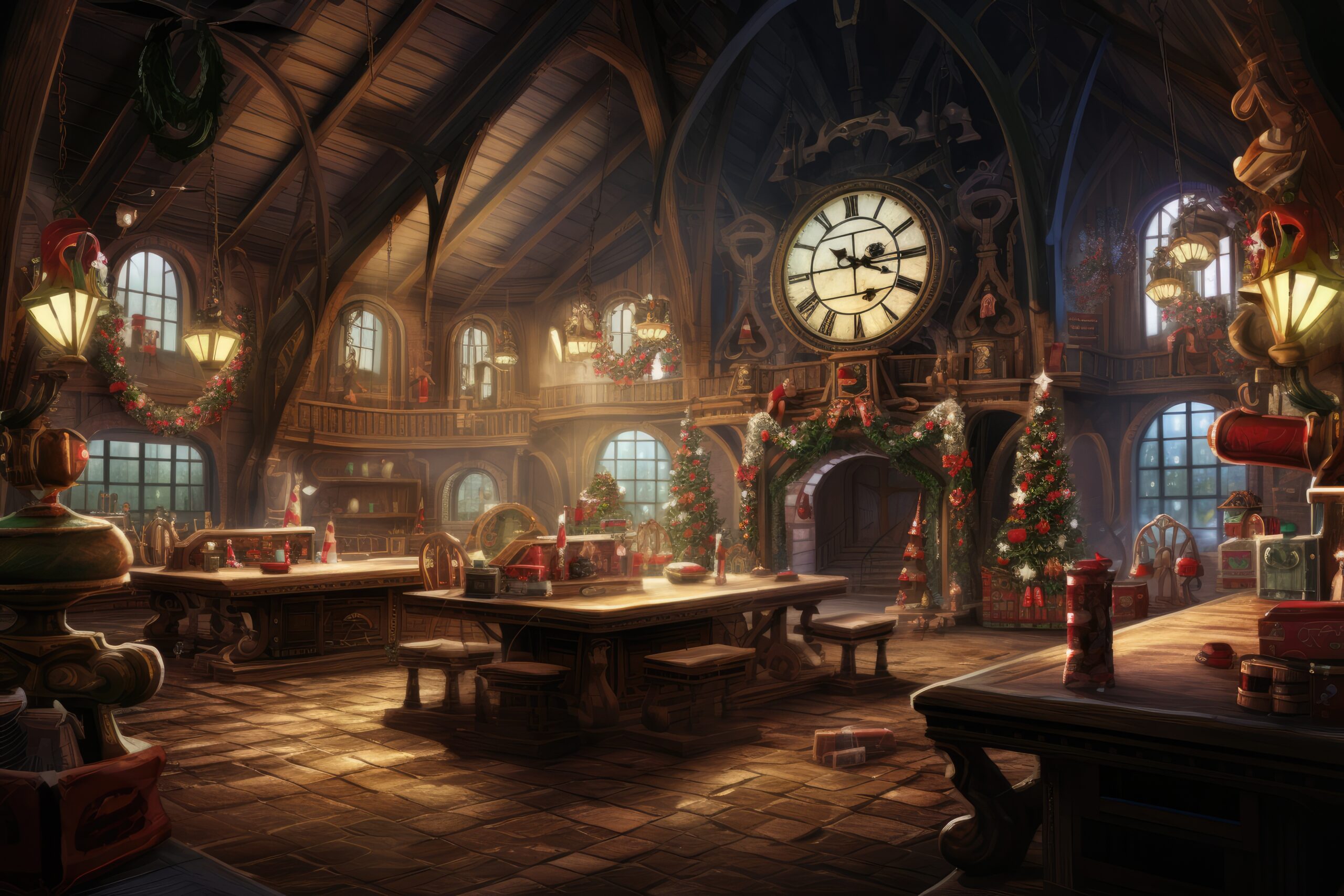The week before Christmas, the floor was loud and uneven. New elves waited at stations. Two sleighs stood half packed. Finnwick moved fast, fixing misses with perfect hands. He felt useful. He felt needed.
Santa watched from the rail. He called Finnwick into the office.
“Tomorrow you stop building toys,” Santa said. “You will build a clock.”
Finnwick frowned. “I am the best with my hands.”
“That is true,” Santa said. “It has also become the limit. When you tell time, the room depends on you. When you build a clock, the room runs on time without you. The team grows. The work becomes reliable. That is what we need now.”
The words cut deep. Finnwick felt the pull of speed. He liked the rush of fixing things. He liked the praise that followed. Under the rush sat fear. Fear that if he stopped doing, people would forget his worth. Fear that teaching would reveal gaps. Fear that a slower hour meant being less.
Santa slid a blank board across the table. “Build the clock,” he said. “Design how we keep time here.”
Finnwick walked back to the floor with the board and a marker. He stood still for the first time in months. He watched the flow end to end. He listened. He saw three patterns. People were guessing. Supplies ran out in silence. Quality checks happened too late.
He drew a simple map. One loop from intake to sleigh. Lanes by color. Clear handoffs. He wrote the first five standards in plain words.
- Pulse every twenty minutes. Huddle for three minutes.
- Each lane owns one step and one backstop.
- Low-supply cards hang at eye level. Yellow means order. Red means stop.
- Quality stops the line. Fix at the station that made the miss.
- Teach, then teach-back within five minutes.
He gathered the crew. “I am off the line today,” he said. “My job is this clock. Your job is to run it.”
He paired new elves with experienced elves. He taught one move at a station. He asked the new elf to teach it back. He watched hands, not words. He kept the tone calm. No blame. Only clarity.
At the pulse huddles he asked three questions. What blocked progress. What helped. What will change before the next pulse. He wrote answers on the board and assigned names. He made the board visible to the whole room.
The first hour felt slow. Finnwick wanted to reach for tools. He kept his hands on the marker. He coached. He checked. He repeated. The second hour moved cleaner. Wrapping used the yellow card before paper ran out. The sleigh team clipped a green tag each time a bag filled in route order. Quality pulled a red card on a miss, and the fix happened at the right station. People raised hands early. People asked better questions. The noise turned into a rhythm.
Santa returned in the afternoon. He stood by the board. “What time is it,” he asked.
Finnwick smiled. “The room knows,” he said. “We are on the third pulse. Two blocks solved. One in progress.”
Santa nodded. “Tell me why this worked.”
Finnwick answered without hurry. “Speed used to feed my ego. The rush felt good. The room learned to wait for me. That made me the ceiling. The clock shifts worth from heroics to standards. The team keeps time. The system holds the gain. I feel slower. I also feel lighter.”
They walked the floor together. Elves checked lists without prompts. Pairs coached at the stations. The reindeer stood ready, calm and quiet. The work looked simple. The work was simple because the clock was clear.
That night the sleighs lifted into the sky on schedule. Finnwick stayed behind and wrote one line at the bottom of the board. “Leave one improvement for the morning crew.” He turned off the lights and felt a new kind of pride. Not pride in his speed. Pride in a room that would run true without him.
MORAL
Do not be the person who tells time. Become the person who builds the clock. Real leadership turns personal talent into a system that others can run, teach, and improve. Your legacy is the rhythm that remains when you are gone.
ACTION STEPS FOR NEW LEADERS
- Draw the loop. Name each lane. Mark every handoff.
- Set a pulse. Twenty minute cycles. Three minute huddles.
- Pair for skill transfer. Teach the move. Teach-back within five minutes.
- Make signals visible. Low-supply cards. Route clips. Red-to-clear quality stops.
- Coach on the floor. “Show me.” Name the gap. Show once. Watch twice. Thank in public.
- Post the board. Track blocks. Assign owners. Close the loop before the next pulse.
- End each shift with one improvement left for the next crew. Keep the clock getting better.
November 3, 2025

View comments
+ Leave a comment